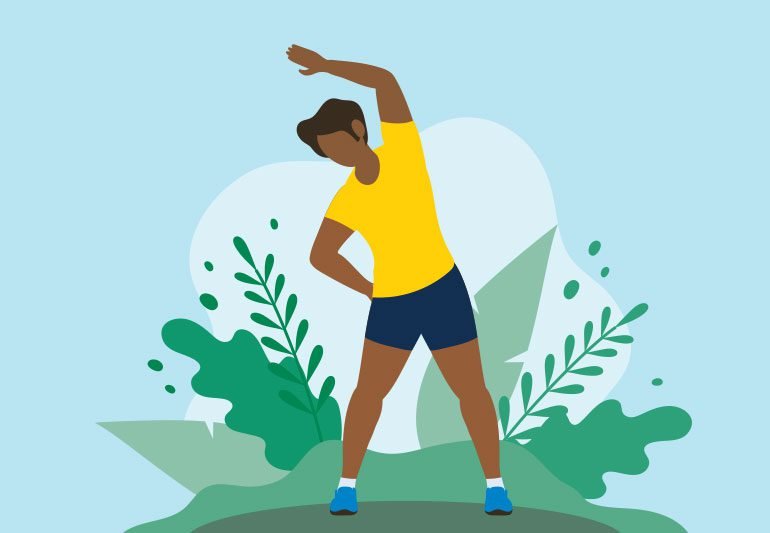Achieving peak performance in any physical activity requires more than just intense training; it also demands an effective recovery plan. Recovery is a critical aspect of athletic success, as it allows your body to repair, rebuild, and recharge after intense workouts or competitions. In this article, we’ll explore essential recovery strategies that can help you achieve and maintain optimal performance in your chosen sport or fitness regimen.
1. Rest and Sleep
Rest and sleep are fundamental to recovery. During sleep, your body goes through important processes such as muscle repair, hormone regulation, and memory consolidation. Aim for 7-9 hours of quality sleep each night to support recovery and overall well-being.
Tips for Quality Sleep:
- Create a consistent sleep schedule.
- Create a calming bedtime routine.
- Keep your sleep environment comfortable and dark.
2. Nutrition
Proper nutrition plays a vital role in recovery. After intense physical activity, your body requires nutrients to replenish glycogen stores, repair muscles, and reduce inflammation.
Post-Workout Nutrition:
- Consume a balanced meal with carbohydrates and protein within 1-2 hours after exercise.
- Include lean protein sources, whole grains, and plenty of fruits and vegetables.
Hydration:
- Stay well-hydrated throughout the day, as dehydration can hinder recovery and performance.
3. Active Recovery
Active recovery involves engaging in low-intensity exercises to promote blood flow, reduce muscle soreness, and aid recovery.
Examples of Active Recovery:
- Light jogging or cycling.
- Gentle yoga or stretching.
- Swimming or walking.
4. Foam Rolling and Self-Massage
Foam rolling, also known as self-myofascial release, helps release muscle tension and improve circulation. It can reduce muscle soreness and enhance flexibility.
Foam Rolling Tips:
- Roll slowly over tight or sore areas.
- Spend extra time on knots or trigger points.
5. Stretching and Flexibility
Incorporating stretching into your routine can improve flexibility, reduce muscle tightness, and prevent injuries.
Dynamic Stretching: Before exercise, perform dynamic stretches that mimic movements you’ll be doing in your workout.
Static Stretching: After exercise, engage in static stretches to target major muscle groups.
6. Active Release Techniques
Active Release Techniques (ART) involve applying pressure to tight or knotted muscles to improve blood flow and release tension.
ART Methods:
- Use your hands, fingers, or tools to target specific muscles.
- Apply pressure while moving the muscle through a range of motion.
7. Cold and Hot Therapy
Cold therapy (ice) can reduce inflammation and numb sore areas, while hot therapy (heat) increases blood flow and relaxes muscles.
Cold Therapy:
- Apply ice or a cold pack to sore muscles for 15-20 minutes.
- Use a cloth or towel to prevent direct skin contact.
Hot Therapy:
- Apply a warm towel, heating pad, or warm bath to relax muscles.
- Use caution to avoid burns.
8. Mindfulness and Relaxation
Mental recovery is just as important as physical recovery. Engage in relaxation techniques, mindfulness, and deep breathing exercises to reduce stress and promote mental well-being.
Mindfulness Practices:
- Meditation.
- Deep breathing exercises.
- Progressive muscle relaxation.
9. Professional Help
If you experience persistent pain or discomfort, consider seeking professional help from a physical therapist, massage therapist, or other healthcare providers.
10. Listen to Your Body
Remember that everyone’s recovery needs are different. Pay attention to how your body responds to different strategies and adjust accordingly. Overtraining and inadequate recovery can lead to burnout and injuries.
Conclusion
In the pursuit of optimal performance, recovery strategies are paramount. Prioritizing rest, proper nutrition, active recovery, and various recovery techniques can help your body bounce back stronger after intense physical activities. Remember that recovery is not a one-size-fits-all approach; find a combination of strategies that work best for your body and your chosen sport or fitness regimen. By incorporating these recovery strategies into your routine, you’ll set the foundation for improved performance, reduced risk of injury, and a more enjoyable and sustainable fitness journey. Your body will thank you for the care and attention you invest in its recovery process.
